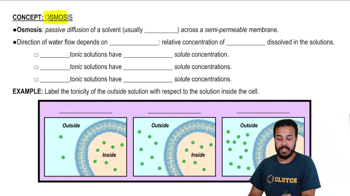Multiple Choice
An important factor directly affecting the glomerular filtration rate is __________.
1467
views
 Verified step by step guidance
Verified step by step guidance Verified video answer for a similar problem:
Verified video answer for a similar problem:



 4:3m
4:3mMaster The Filtration Membane with a bite sized video explanation from Bruce Bryan
Start learning